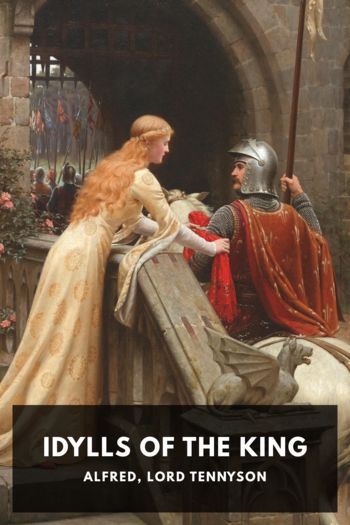Selkirk's Island Diana Souhami (english readers .TXT) 📖

- Author: Diana Souhami
Book online «Selkirk's Island Diana Souhami (english readers .TXT) 📖». Author Diana Souhami
Having two prizes in our Company, of wch one is the lesser Manila Ship whom wee took on ye 22 December last off the coast of California We are in good health & are making all Convenient despatch hence, we hope the same good providence which has hitherto so wonderfully preserved & protected us will continue it and Conduct us to a happy meeting wth you and Enjoyment of the Effects of our labours & many risques.†
In the relative comfort of a hospital, Rogers had a large lump of musket shot cut out of his jaw. It had been there six months:
we reckon’d it a Piece of my Jaw-bone, the upper and lower Jaw being much broken, and almost closed together, so that the Doctor had much ado to come at the Shot, to get it out. I had also several Pieces of my Foot and Heel-bone taken out.†
The privateers stayed four months at Batavia. Their ships needed radical refitting and careening. Javanese caulkers helped with the work. The Marquess, when heeled over, revealed ‘the bottom being eat to a Honey-Comb by the Worms’. It was sold as salvage, and its cargo divided among the other three ships.* Edward Cooke returned to the Dutchess as second captain.
Though there was plenty to eat, the sun’s heat was a hazard. Five men died of dysentery and yellow fever. A crewman was torn to death by a shark while swimming. More than seventy men had died on the voyage. Those who had made it thus far drank arak at eight pence a gallon and bought sugar for a penny a pound.
1711 Great Jarring Among Us
THE BRISTOL owners wanted their prize home and the plunder in their pockets. A flurry of letters from Batavia filled them with alarm. The mood among officers and crew was deadly, laced with suspicion, threat and greed. Carleton Vanbrugh told them ‘We have had great Jarring among us.’ He described Woodes Rogers as a ‘Villainous Defamator’ who had abused him throughout the entire voyage. Thomas Dover wrote that Rogers was ‘disposeing of wt He thinks fitt out of this Ship’ and had threatened to cut the throat of anyone who complained. Rogers reminded them he had been promised ‘a two and thirtieth part of the whole’ at the outset of the enterprise, and warned them to keep to this. ‘For Christs Sake don’t lett me be torn to pieces at home after I have been so rackt abroad.’†
The owners replied that discord would lead to the overthrow of the voyage, that orders and directives must be observed and offenders punished as mutineers.
No precise inventory of the Batchelor’s cargo could be drawn up until it was unloaded. Rogers warned them that much might be spoiled. ‘We have not yet seen the Goods stowd in the Manila ships hold,’ he wrote. ‘I wish it might rise out of her free from Damadge.’† He put the cargo’s value at £200,000 ‘separate from all Dutys and Charges’. The crew, always on the edge of mutiny, and rightly suspicious of their officers, valued it at three million pounds and more. They accused Rogers of hiding treasure at Batavia, with the intention of picking it up later.
The plan was for the refitted Duke, Dutchess and Batchelor to sail from Batavia to the Cape of Good Hope and wait there for an escort of Dutch and English warships to take them to Holland. The fear was that without such protection the enemy might seize the prize as it sailed near the coast of north Africa and Spain.
In three more months at sea they made good speed. On 3 and 4 December they covered 270 miles. They arrived at Cape Town on 29 December and anchored in the bay below Table Mountain. Again they were in a friendly town with all the food and drink they desired. To buy ‘Necessaries and Provisions like Carrots, Eggs and a suitable Quantity of Rack’, Rogers sold one hundredweight of silver plate, sixty ounces of unwrought gold, sundries, and fourteen Negroes. A Negro Woman and her Child fetched £3 10s, a Boy went for £26 5s, and nineteen dozen pairs of European silk stockings went for £56 10s 6d.†
The surgeon James Wasse died at the Cape. So too, to Rogers’ satisfaction, did Carleton Vanbrugh, badly burned in the battle with the Manila galleon. Edward Cooke arranged his funeral ‘the Ships firing Guns every half minute as is customary on these occasions’. He was buried in a Dutch cemetery.
The jarring captains sent more discordant letters to Bristol. Courtney said the Dutchess was ‘a very sickly ship’ and that he and forty of its crew were ill. Rogers described himself as ‘just recovered from ye Jaws of death almost’ and expressed concern that his share of the treasure should ‘make some Amends for what’s past’. And Dover and Dampier wrote of how, when they tried to imprison Woodes Rogers for stealing a chest of pearls, jewels and gold, he threatened to kill them.†
After three tense months an escort of sixteen Dutch and nine British warships arrived. The convoy of twenty-eight ships set sail on 6 April commanded by Admiral Pieter de Vos. It was a warlike spectacle and a disciplined manoeuvre, the galleon guarded, all cannon ready. It spoke of victory, triumph and riches. Nothing now was left to chance or luck.
This squadron sailed north over the Atlantic Ocean. Cooke filled sixteen pages of his journal with lists of his sailing and signalling orders. To avoid attack from the French in the Channel, they took a circuitous route to Europe: up the west coast of Ireland, round the





Comments (0)